In the summer, Texas can feel like you’ve just walked out of your air conditioned home into a steam room where the person controlling the temperature and steam settings hates you; it’s stifling. I was in Austin recently, and I felt like I could shower every hour and still feel pretty unsavory.
But one thing’s for sure: it’s impossible to go to Texas and not crave barbecue, regardless of how messy and uncomfortable it may make you feel. No joke, I met with a friend who was vegan while she lived in California, but Austin’s barbecue scene changed that real quick.
The shops come in all shapes and sizes: fancy restaurants, chain restaurants, gas stations, and mom n’ pop shops serving up barbecue in trailers. You take your pick; they’re all pretty damn good.
When in Texas, I always choose the most random joint I can find. It’s the unexpected places that seem to have the best food. Barbecue works the same way—you always find it where you least expect it.
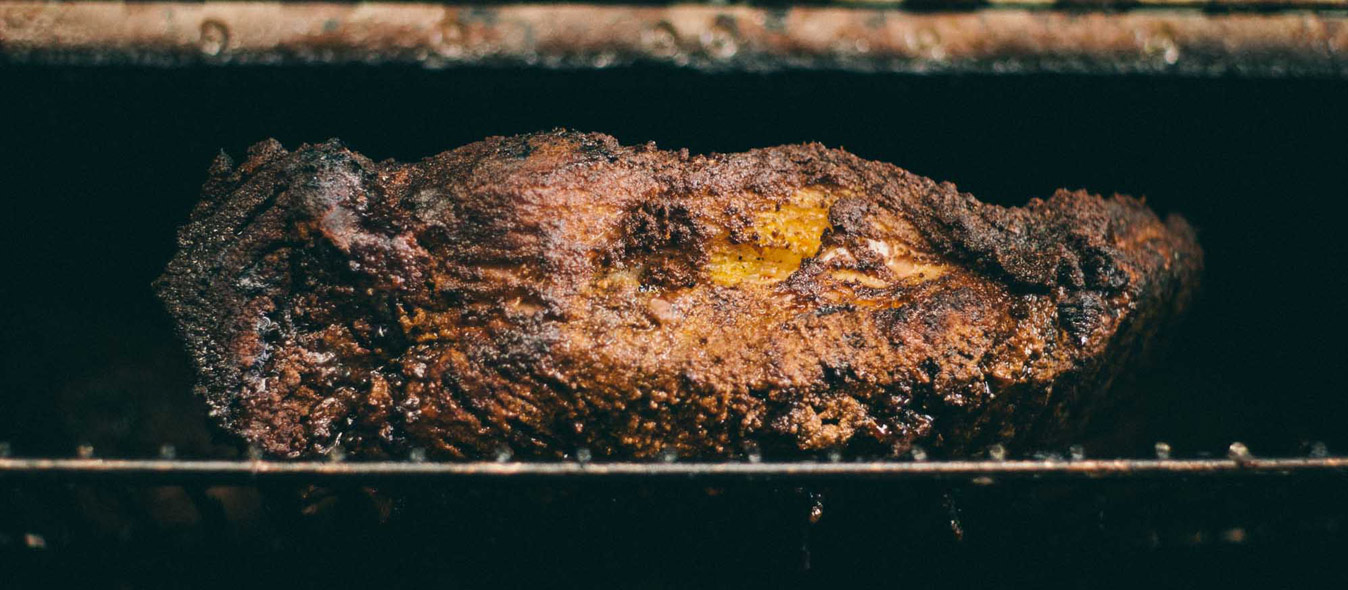
A few days before I left for Austin, I had an unexpected barbecue experience in Los Angeles while parking in a nondescript garage downtown near Pershing Square. I’m looking for Grand Central Market, and stumble into something that, from the outside, looks like an old theatre. Inside, however, is a culinary funhouse. A farmer’s market combined with street food from every culture imaginable, the space is experiencing something of a resurgence. Built in 1917, and in operation ever since, Grand Central Market has continually changed to reflect Los Angeles’ surrounding culture. Once consisting of fishmongers, Jewish delis, and—as their website states—“even one vendor who sold nothing but eggs,” the Market has continued to evolve with the times, and continues to deliver some of the highest quality food experiences you can find in LA.
It’s 10:30 a.m. as I walk through the Market, dodging fast-moving patrons picking up their morning coffee or choosing the perfect cut of meat from the local butcher for the upcoming 4th of July weekend. My head is spinning but I smell smoked meat coming from the other side. And, as they taught me in Texas, always move towards the smell of smoked meat.
I pass through to the other side of the market and walk out on to Horse Thief BBQ’s beautiful, sun-drenched patio. It’s gonna be a hot one so I decide that, even though it’s only 10:30am, it’s Friday and I need a beer. Co-founders and Austin-to-LA-transplants Wade McElroy and Russell Malixi meet me at the bar and pour me a Saison.
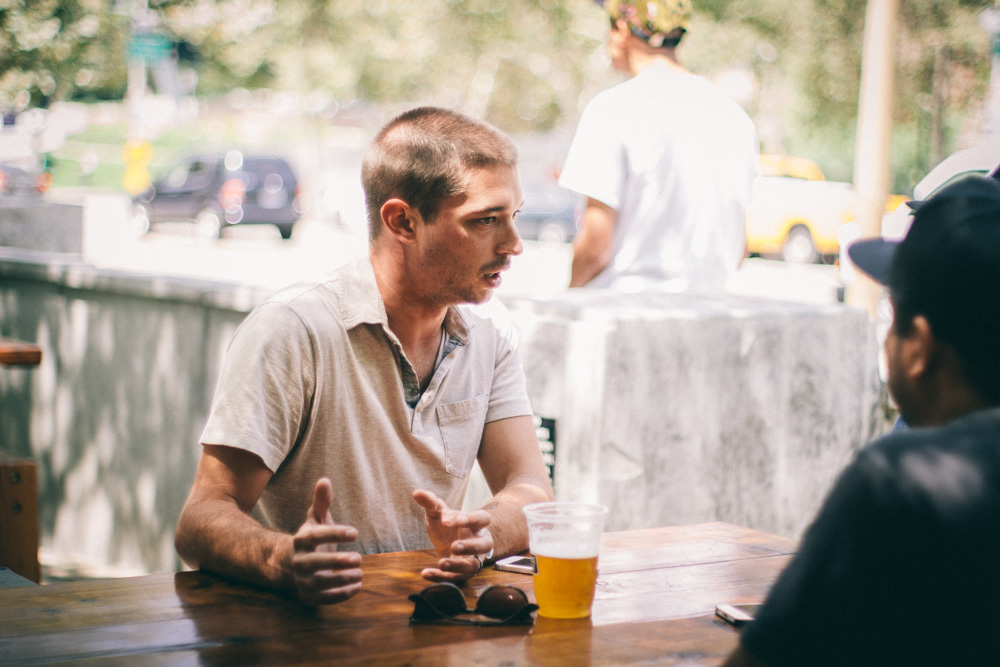
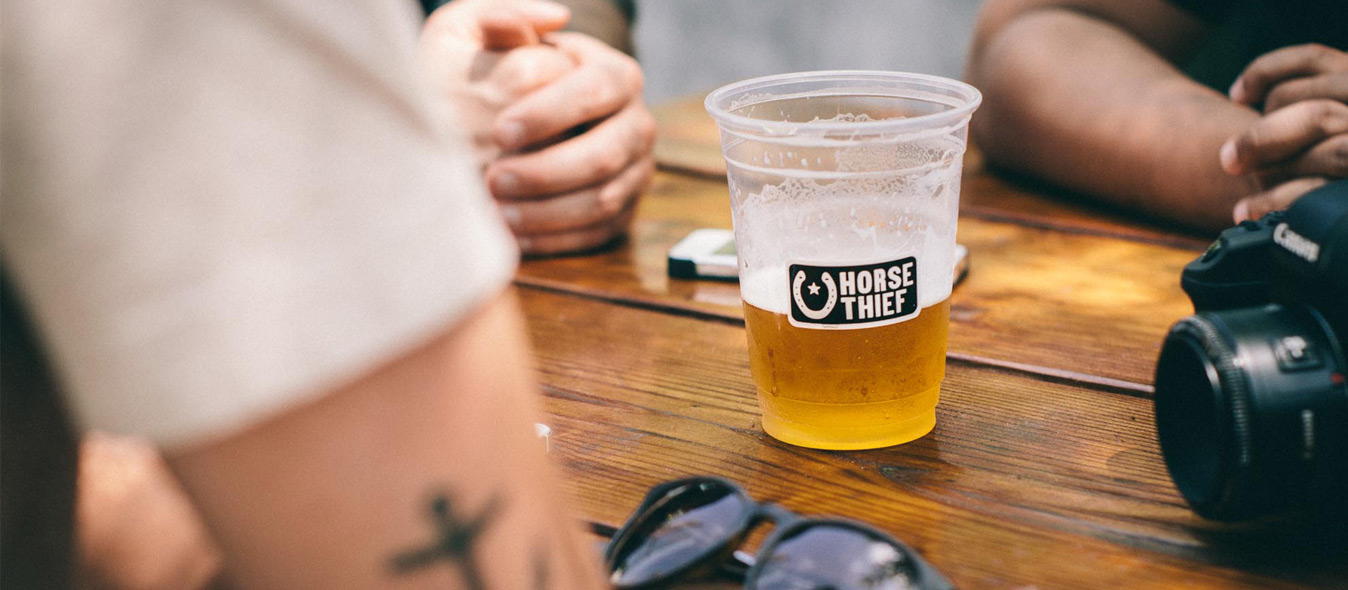
Horse Thief’s design is not extravagant. It’s rather simple, really. You order at one window, pick up at the next, grab a beer, and sit at communal tables in the middle of a concrete courtyard strung with Christmas lights and umbrellas to shield you from the heat. I imagine it’s beautiful at night.
It’s 10:48 by now, but I can’t wait anymore. So I order a plate of ribs and brisket (their specialty). The ribs literally fall off the bone, and the brisket doesn’t even require a knife to cut. The caramelization of the rub is perfectly crunchy while the meat just melts in your mouth. The barbecue sauce (on the side) is tangy—just sweet enough—and the sides are insanely good. I’m trying to not look like an animal to the two gentlemen I’ve just met, and I’ve eaten my daily calorie intake by 11 a.m., but I don’t think I care anymore.
You have to understand: My standards for barbecue are exceptionally high. I’ve had better barbecue at 76 stations in Texas than I have in my 20+ years living in California. But something about the way Wade and Russell talk about the craft is comforting. Horse Thief has consistently huge lines, they routinely run out of meat—sometimes shortly after opening at 11am—and Russell even talks fondly about sleeping next to their smoker. You can tell they’re the real deal.
In just my first few bites, Horse Thief has become the best thing to ever happen to barbecue in Los Angeles. But, while it’s all about what’s on the plate, food doesn’t appear out of thin air; it’s about the story behind the hands that make it.
So I wipe BBQ sauce from the sides of my mouth, try my best to conceal my excitement and look semi-dignified, while Wade, Russell and I chat about how Horse Thief started and why they chose to open a barbecue joint in Los Angeles.
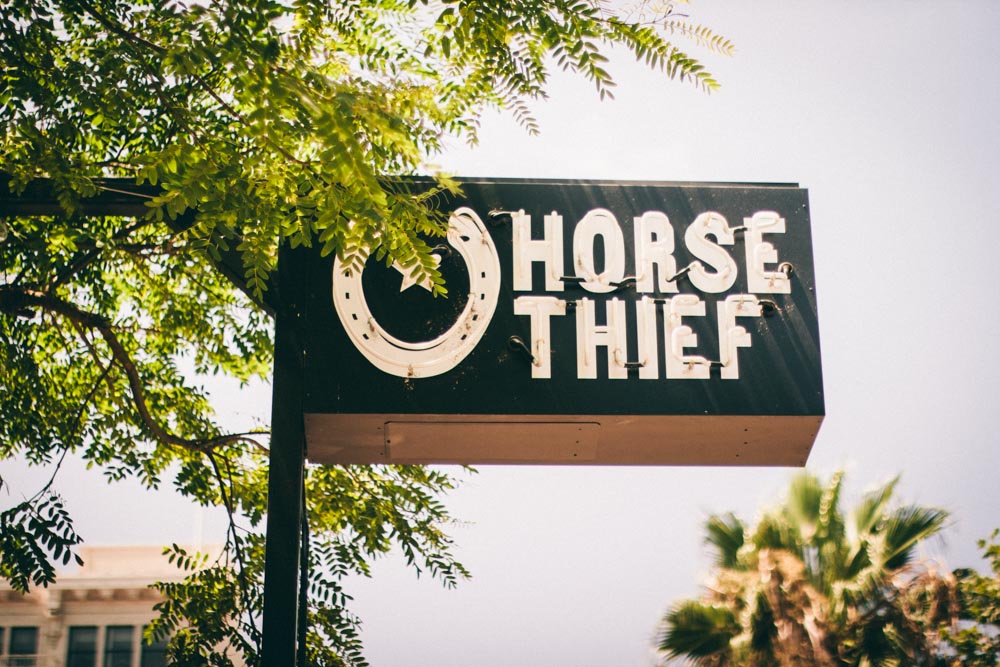
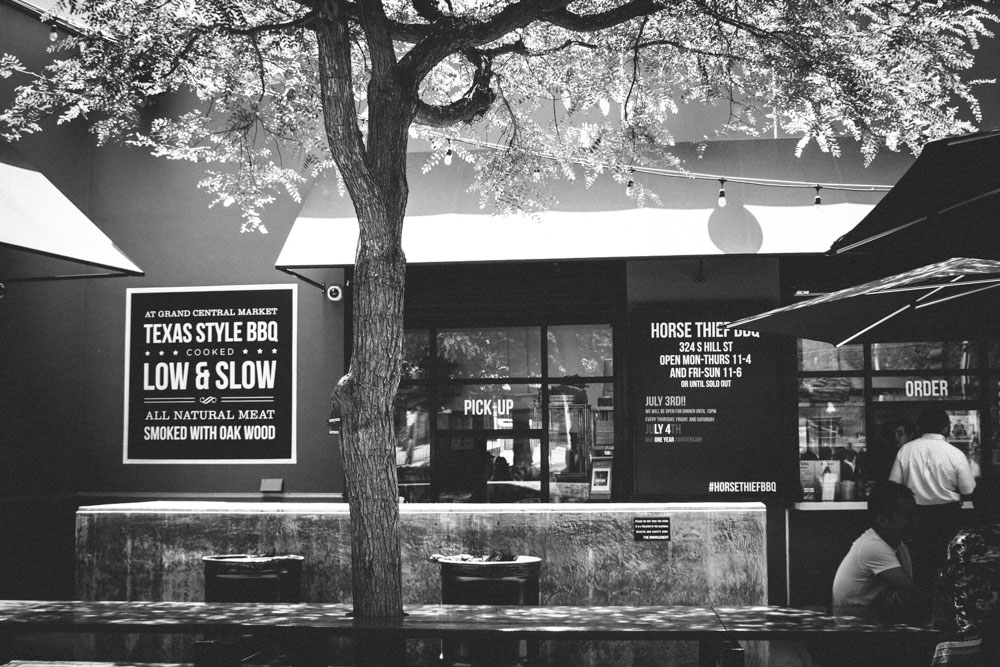
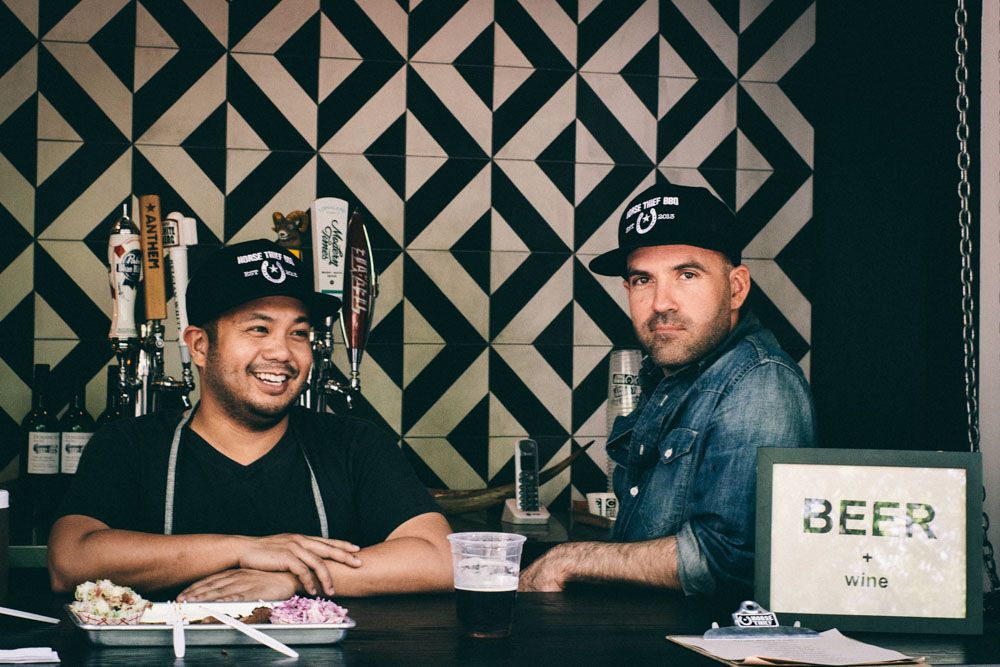
Tell us a little about your upbringing and where you came from… Was barbecue a big part of growing up?
Wade: It was something we grew up with, and it’s something we missed when we moved to LA. Last week we were out in Austin and Houston, and were just reminded how much we enjoy the experience of eating barbecue. Russell grew up in Houston, and I grew up in Austin. So that was part of our lives growing up. My dad used to take me out to Lockhart, and it was a cool thing to drive out with him—it was a forty-five minute drive out of town, just to go eat barbecue at big communal dining tables. And that’s a different kind of experience than everybody sitting at their own individual table. When we were writing the business plan for Horse Thief, we emphasized how it would be designed as an egalitarian experience. Because at Texas barbecue joints you’ll have Japanese businessmen that flew their private planes in sitting next to people that mow yards, and everything in between—families, students, motorcycle bike gangs—everybody lands there, sits at the same table, grabs from the same bread. It’s kind of a democratizing experience. It levels the playing field.
So when did you start cooking barbecue?
Wade: It’s something we played with as amateurs/enthusiasts beforehand. And then when we decided to open this place over two years ago, Russell, our friend Anthony, and I bought one of these smokers—actually the same kind we’re using inside the restaurant, since we knew we were going to be using these. It’s a commercial smoker, we put it at Anthony’s house in Tarzana, and smoked meat every chance we could get. It was out on his patio, next to his pool, so we’d just load it up, run our experiments and invite friends over because, you know, if you smoke two whole briskets it’s a lot for three people.
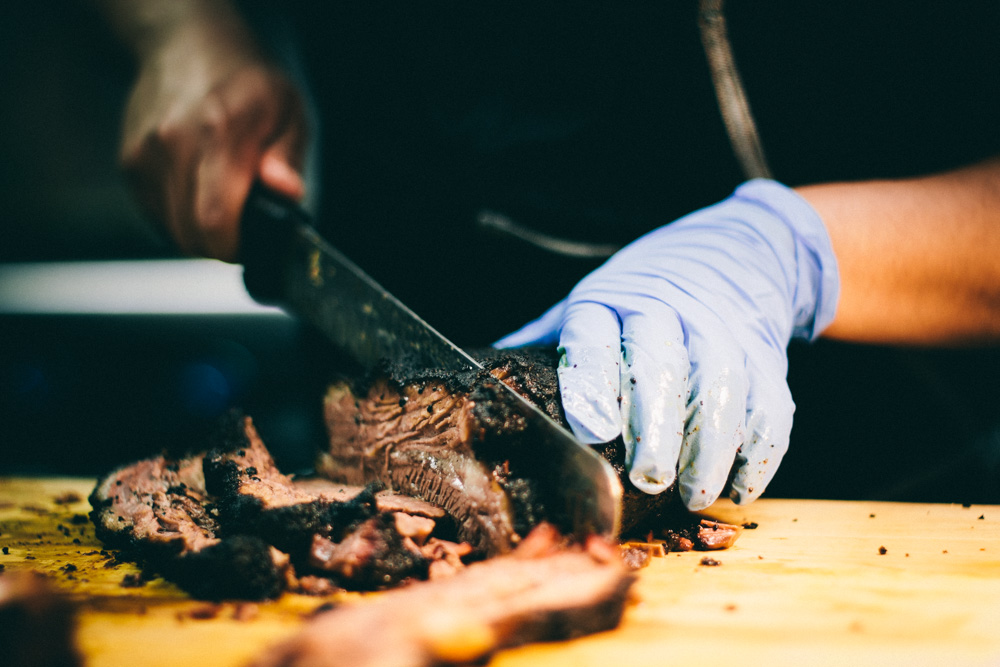
Did you have any restaurants before this?
Wade: I had two in Austin called Thunderbird Coffee: beer and stuff.
Russell: I always wanted to open one, but the timing was never right. So when Wade mentioned he wanted to open a barbecue place, I knew I had to jump on the opportunity.
Wade: Russell was in tech, and he would send me business plans for restaurants.
Russell: For years!
How funny. I’m sure it’s collaborative, but who’s the mastermind behind the meat?
Russell: Both of us worked on it, really. We did a lot of research, hours, and hours of test runs, until we finally got it just right. We’re still learning every day.
Wade: If I had to say who the mastermind is though, I guess we kind of split it. When we were in development for the restaurant, I focused on sides, and Russell focused on the meat. He’s modest about it, but I have to give credit where it’s due.
Russell: I mean, there were nights where I’d sleep next to the smoker, with a 12-pack of beer.
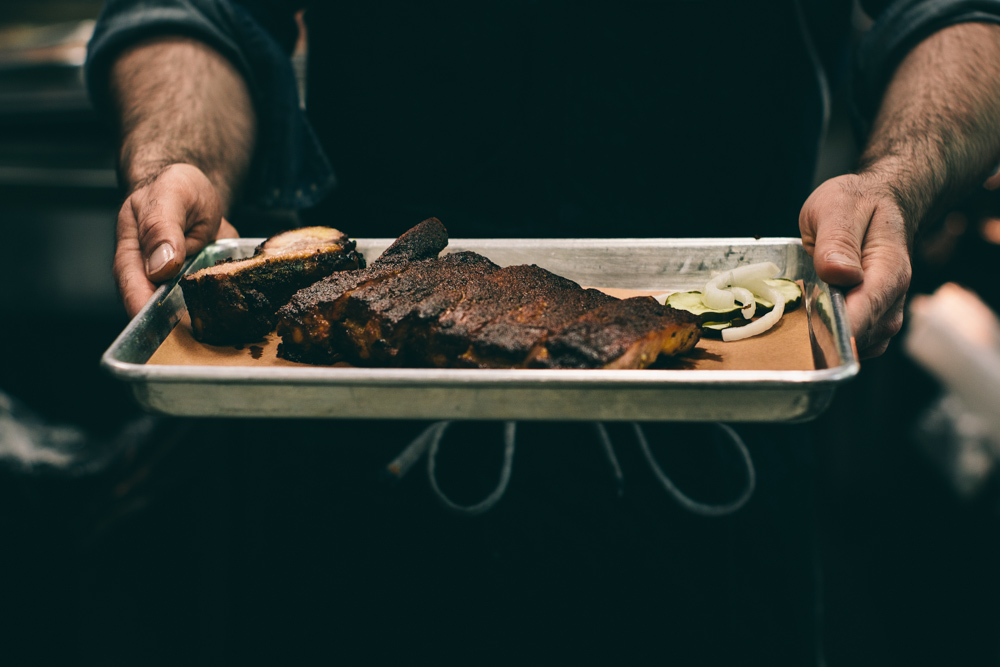
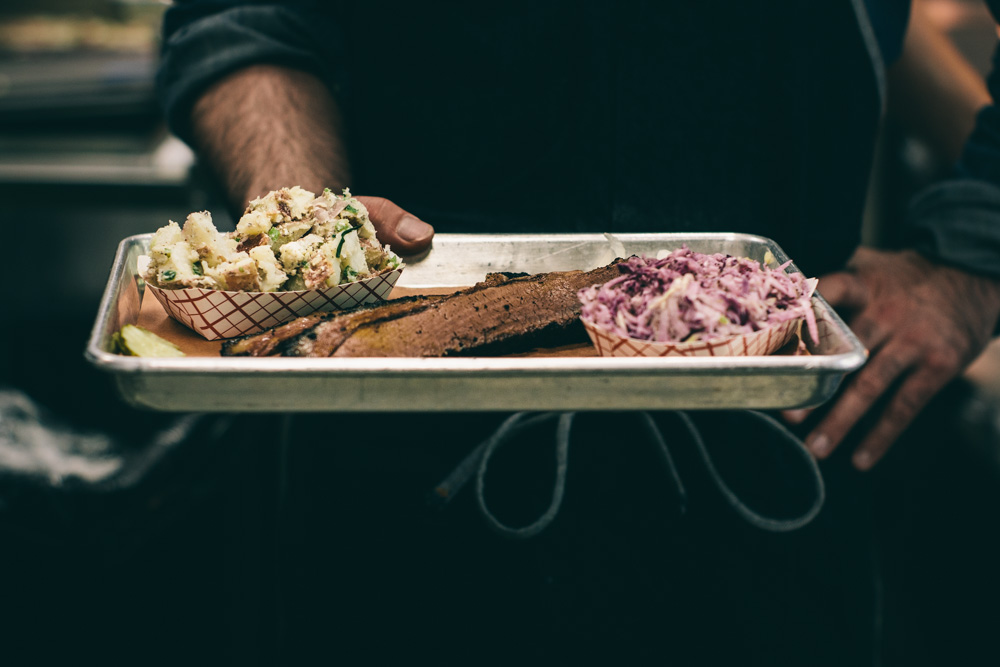
How long does it take to prepare a brisket? You’ve mentioned that it’s virtually a 24-hour process.
Russell: So the beef rub is 10-13 ingredients, all made in-house. The sauce we make from scratch as well. The brisket is smoked for 15+ hours overnight. And that’s one of the reasons we run out of food sometimes: we only make one batch because it takes so long to make. It’s not just like, “Oh, we have a big line, let’s throw a bunch of burger patties on the grill.” You have to forecast how busy you’re going to be—something we’ve gotten a lot better at over time.
To me, the fact that a barbecue place can run out is a good indicator they’re probably doing it right. If it’s constantly full-supply, I think I’d scratch my head, because making good barbecue is no joke.
Wade: Absolutely. People tell us all the time that they know we’re legit because we run out. But, back to the brisket: we have the rub, we trim them, we put them in and smoke for about an hour and a half per pound. But we pull them out at a particular temperature to see how it’s doing. If it’s done it, um, it has, well, a certain jiggle. It’s a really sexy jiggle. I’ll see it jiggle from across the room and that’s when I’ll know it’s gonna be tasty.
Russell: So we use the Central Texas standard oak wood when we smoke. We tried other types in the past.
Did you experiment with other types of wood?
Russell: We have in the past, but other woods are more bitter; some are sweeter.
Wade: Oak is just the taste of Central Texas. It’s balanced; it’s not overwhelming. Some of the other woods can take over the palate. But oak is home—that’s what everyone uses in Texas.
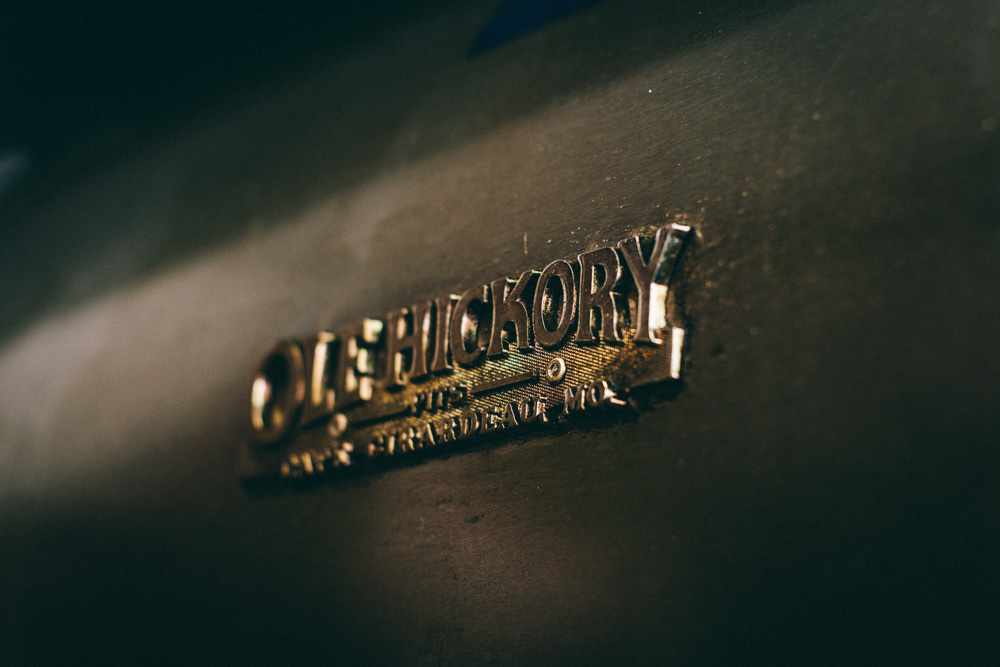

As far as sides go, one thing I’ve noticed is you guys have these creative variations on Southern staples. So they appeal to people who are craving a “down home” meal, but they’re also creative enough to appeal to somebody from LA who has a more educated palate. What was your inspiration for them?
Wade: We just wanted them to be really simple, but as good as we could make them. We’ve eaten at a lot of barbecue places where the sides are kind of flat—almost an afterthought. And then, you know, you go to a steakhouse and you get mashed potatoes and they’re just fantastic. We wanted to create an experience where all the sides were solid and delicious. Not too exotic, or unapproachable, but just creative enough. Like the bleu cheese and bacon in our potato salad. It’s a riff on German potato salad because there’s no mayo; it’s just oil, vinegar, bacon, salt, pepper, and green onions. But those flavors are classic and powerful. Bacon and bleu cheese just go together.
That’s what I’ve noticed. The sides all taste familiar, but they aren’t predictable. Like something I’d have at a family BBQ back home in Texas, except… really good.
Wade: Yes, exactly. We didn’t want to violate the feeling of everything being “comfort food,” but we did want that “wow!” factor, where people felt like they were eating something interesting.
Russell: We actually have a three-side plate on the menu that’s really popular with vegetarians who will come here just for that.
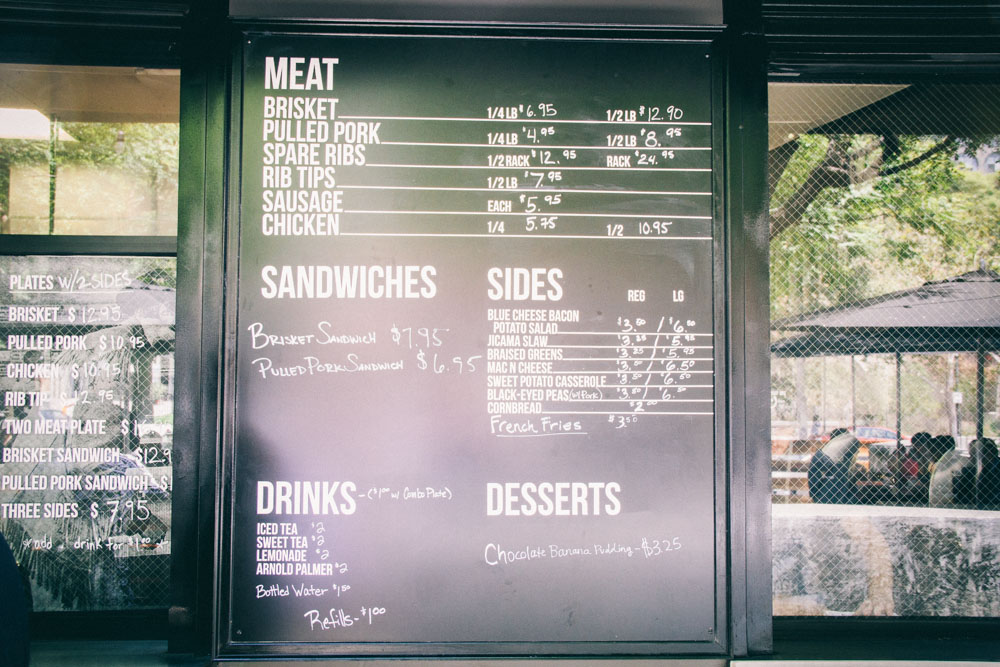
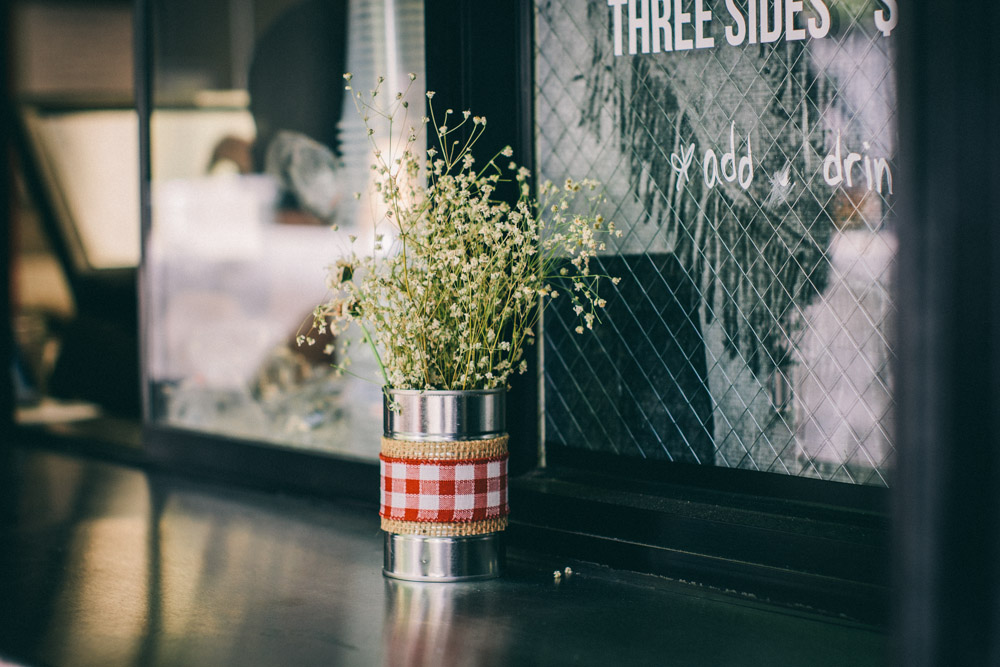
What brought you guys to LA? And Grand Central Market, in particular?
Wade: I was in Austin—had been there forever, and just felt like I need a change. So I moved to New York, and opened an art gallery with a friend, which is still in business. But I finished that, went through one New York winter and was like, “Forget this.” Then a friend of mine had just moved to LA, and told me I should check it out, so I did, and I loved it. Especially since LA doesn’t even have winter. While in Brooklyn, though, I saw some guys doing barbecue, and it was exciting and fresh, and I decided it would be nice to open a new, more youthful expression of barbecue here in LA to kind of kick off a new dynasty.
Which is great because LA doesn’t really have much when it comes to a legit barbecue experience.
Wade: Yeah, that’s what we’re trying to do here: establish a real barbecue institution.
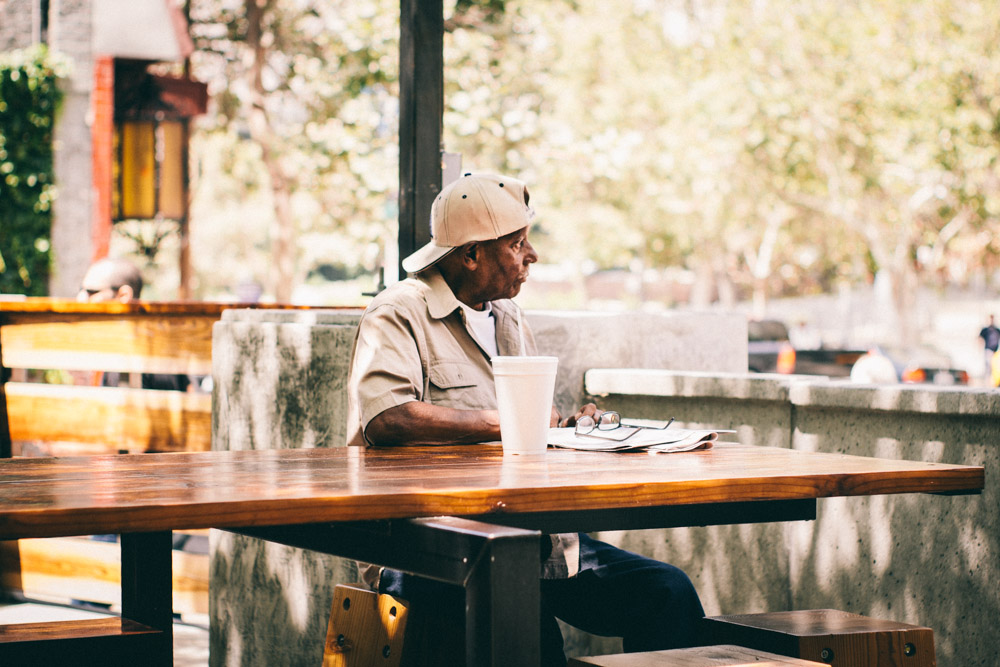
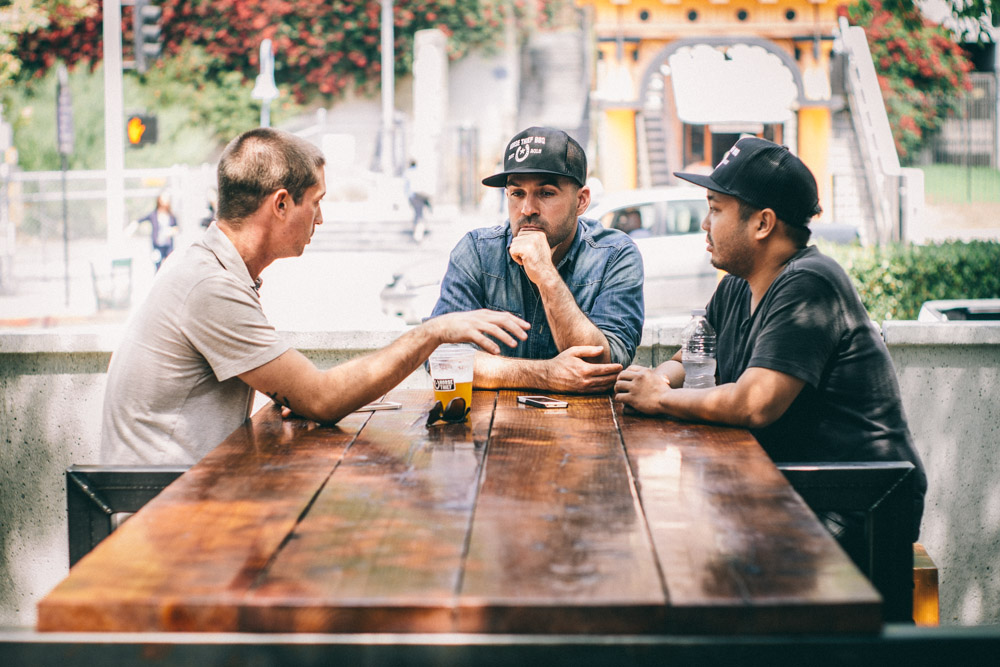
What about Grand Central Market? Why here?
Wade: We were looking at a lot of other places. We were looking at Hollywood, in particular, and a few other more prominent locations. I’m really glad none of them panned out because when we saw this space and we met Kevin West—a cookbook author and one of the creative leaders involved in this project—who had a plan to turn this into an artisanal food hall, to really activate the space and make it a beacon of food culture in Los Angeles. We loved the vision. The management team is really helpful and collaborative. At the time, there were people drunk out of their minds at 10:30 a.m., but we just envisioned something different, and that vision is really starting to manifest now: there are people out here drinking a beer in the courtyard, eating barbecue—it’s turning into a lovely space, and we’re going to be open at night soon, so we can take even more advantage of this beautiful view, right next to G&B (coffee) and the patio. We’re really, really happy this is where it got started.
You’re really at the heart of everything here, surrounded by Los Angeles’ culture. That, I feel like, more than anything, is what makes this so cool. In Texas, everything is so… Texan. But here, you’re bringing Texas into the cultural melting pot that is LA—close to Chinatown, and so many other things, that you get to embed Texas right here, in the middle of it all.
Wade: Totally! It’s like a feeling of community and comfort. Russell and I used to go to The Salt Lick—which is legendary—in Driftwood, Texas, about 50 miles out of Austin, with a bunch of friends. It was a really great experience, one that we’re recreating here. You’ve got community tables, we’ve strung lights, and drink a beer at night until around 10.
How long did it take you guys to choose your beer and wine selection? Did you have to get drunk a lot?
Wade: Russell’s been doing some really good research… for years.
Ah, right, the 12-packs sleeping next to the smoker!
Russell: Yes, about 34 years of research. You know, the beer and wine permit took some time—probably about 10 months, since we opened. We wanted to go with some local, craft beers, but also some Texas staples on tap, like Shiner Bock, and Shiner White Wing.
Wade: Also, we wanted to make sure we had affordable options, so that includes the Shiner, Tecate, and Pabst. Those are all four to five and a half dollars. Then we have the Duvel, Modern Times Saison, Saint Archer, two IPAs, and then Speedway Stout from Alesmith Brewery. A lot of light beers to pair with the heat and the BBQ, and then the stout option for people that are looking for something a little heavier.
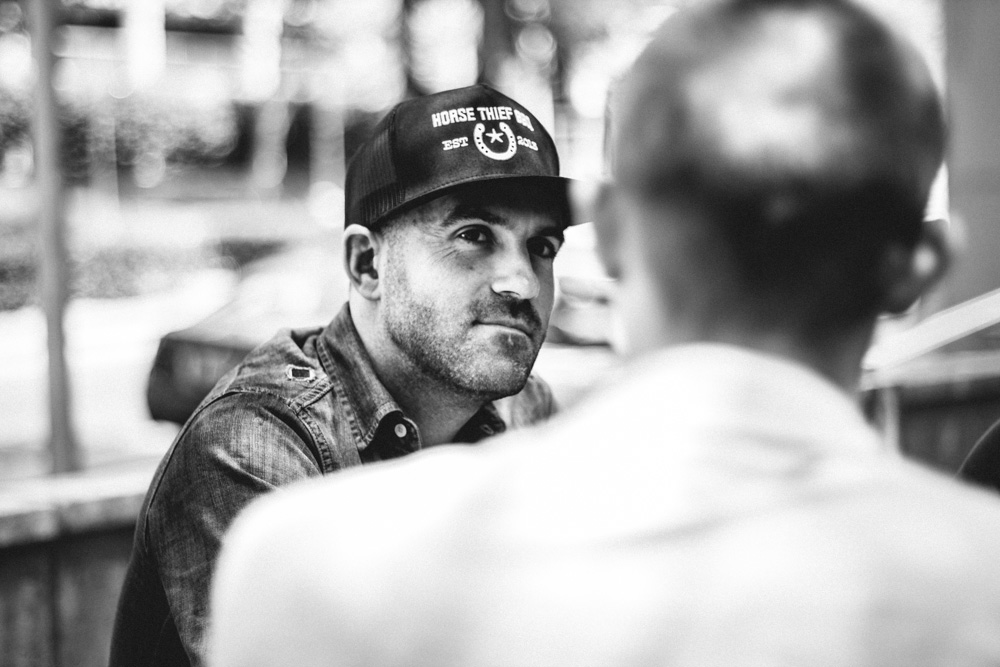
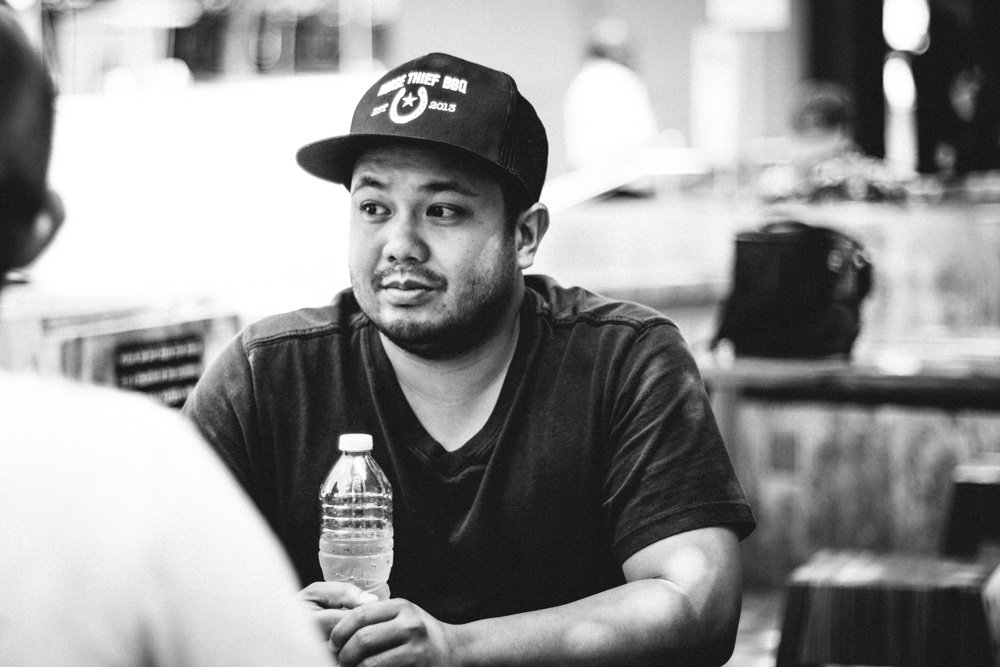
What about the wine list? How did you go about pairing with something like BBQ?
Wade: We really wanted to complement not just the cuisine, but also the atmosphere. I took a month long Italian wine class, and my instructor was also a distributor, so he helped us put together our wine list. It’s affordable, but really high quality stuff. Right now we’ve got a Rioja from Spain, two French wines, a couple Rosés, and we have a chardonnay by the glass that’s from the California coast.
Since anything creative can be kind of a roller coaster emotionally, I’m always curious to know—from a business perspective—what was your highest high, and what was the lowest low?
Wade: I think our highest high is always when we break our newest sales record and Russell and I give ourselves a high five. That’s always a good feeling.
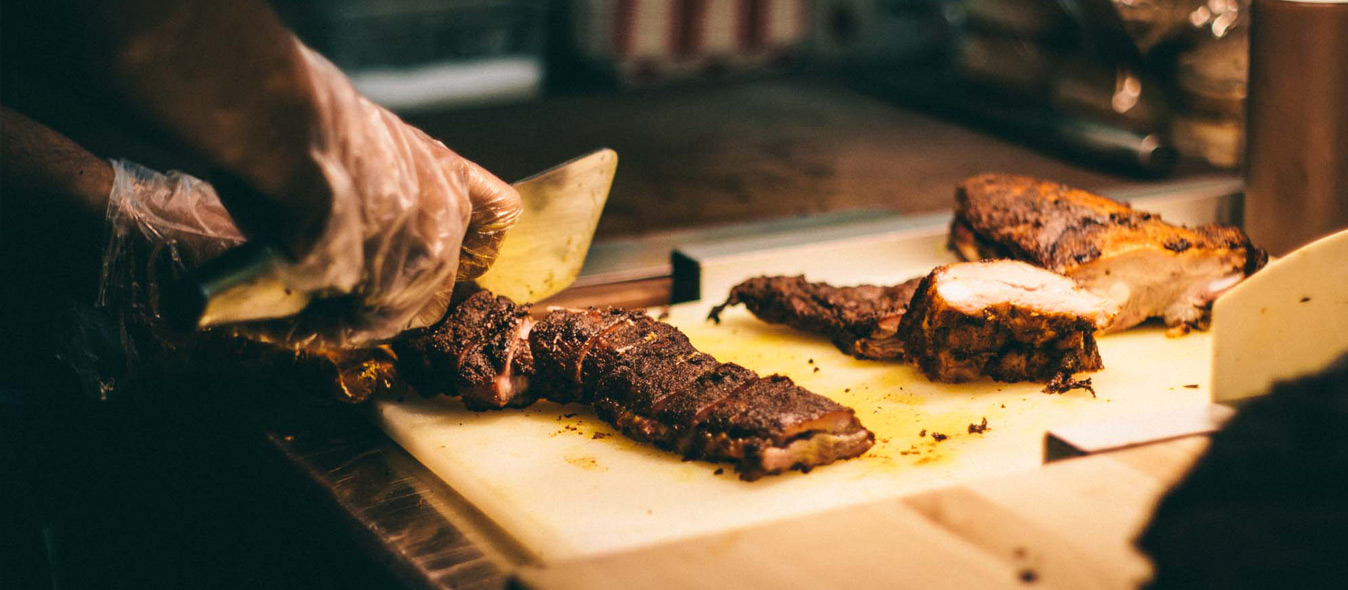
How often are you doing that now?
Wade: The last few months? Regularly. Now that we’re open at nights, that’s 12 more service periods that we’re open, so I’m looking forward to more high fives.
But those high fives are in contrast to some lows, of course. In the fall, we really weren’t sure if this was going to work. I guess, intellectually, we did, but around October we were doing about half of what we’re doing now.
Russell: Well, there’s always variance too. Since we’re outside, it’s a bit slower. And, in the summer here there are those 110, 115 degree days, and we weren’t as busy as we’d like to be at times.
Wade: That was extremely stressful at times. I’d look at the tickets and just think, “Oh my god.” But I feel like we’ve made it at this point. We’ve gone through the dark part at this point and, really since January, when Grand Central Market was mentioned in the New York Times as one of the top 50 places to visit in 2014, people started really taking us seriously.
Russell: The wind was really at our backs then.
Wade: Yeah, because we were the pioneers here. And either everybody catches up with the pioneers and the pioneers do well. Or no one ever comes out and the pioneers, well, they die off. We weren’t sure what kind of pioneer we were going to be.
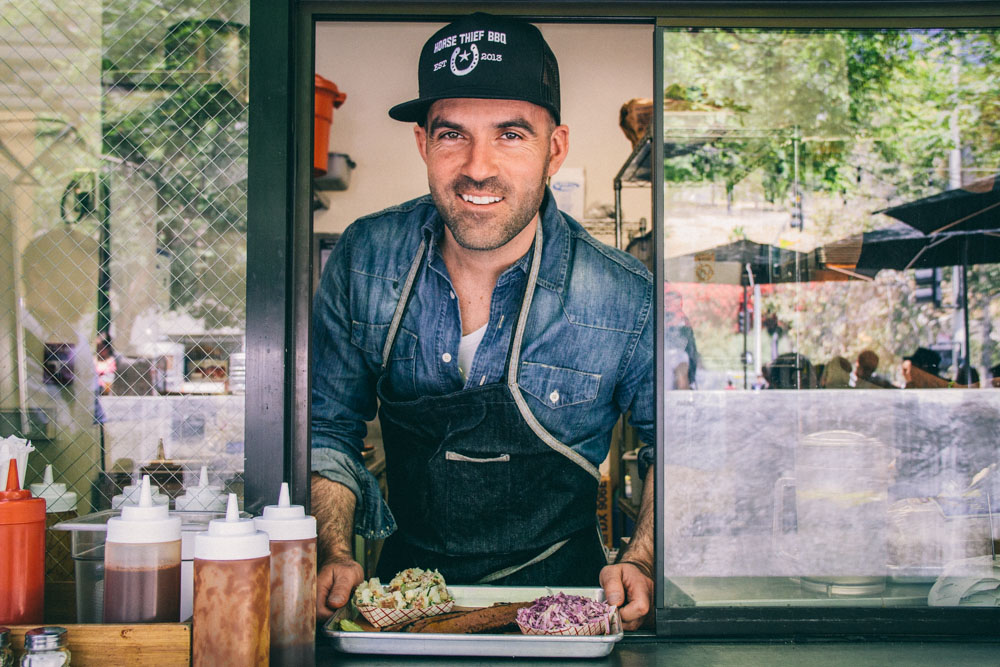
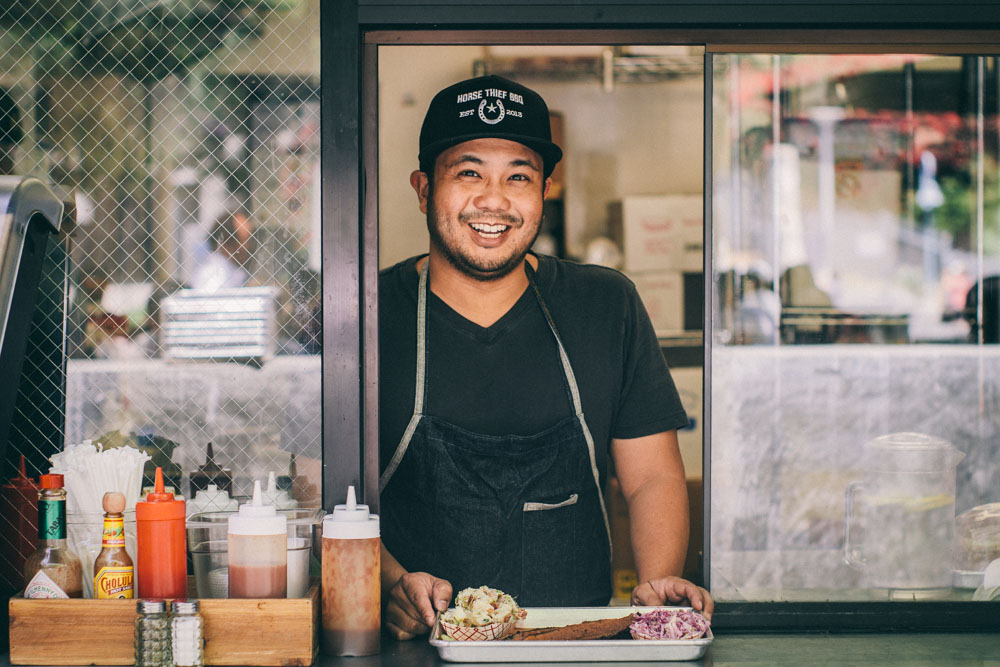

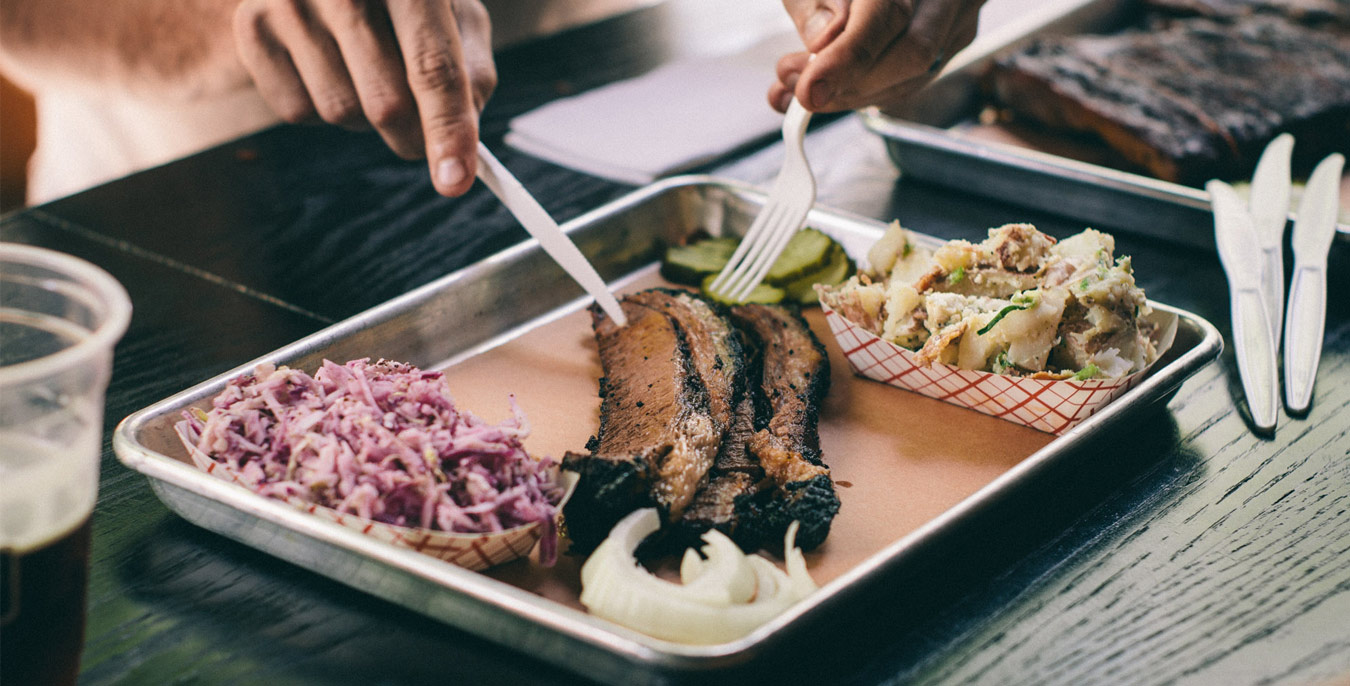

Our comments section is for members only.
Join today to gain exclusive access.